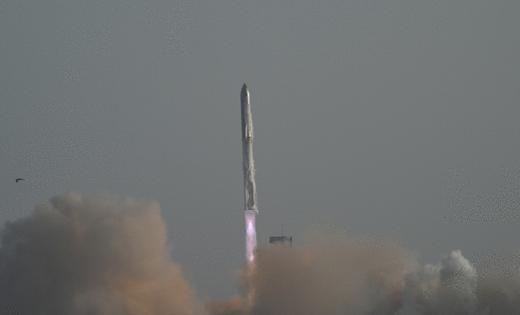FAA OK's SpaceX to launch Starship again after last flight's destruction
Published in Science & Technology News
SpaceX’s last two efforts to make progress on its Starship and Super Heavy rocket ended with streaks of debris hurtling across the sky. The Federal Aviation Administration, though, is now satisfied it’s safe for SpaceX to try again.
The FAA on Thursday announced the in-development rocket that launches from Starbase, SpaceX’s Texas site, can return to flight. The decision comes after closing the investigation into a March 7 test flight that resulted in the destruction of the rocket’s upper stage that could be seen across the East Coast and into the Caribbean.
It’s a near mirror result of a January attempt, with both explosive ends seen in videos captured from the Bahamas, Turks & Caicos and Florida.
“The FAA conducted a comprehensive safety review of the SpaceX Starship Flight 8 mishap and determined that the company has satisfactorily addressed the causes of the mishap, and therefore, the Starship vehicle can return to flight,” the FAA stated in a press release. “The FAA will verify SpaceX implements all corrective actions.”
The ninth test flight could come as early as next week.
Starship is the replacement hardware for the company’s existing Falcon 9 and Falcon Heavy rockets that launch from Florida and California. For now, SpaceX has only used its Texas site for Starship test launches amid a massive $1.8 billion construction frenzy on the Space Coast to support two more Starship launch sites.
Starship is SpaceX founder Elon Musk’s answer on how to build out a human colony on Mars. But even with the rocket’s increase payload capacity it will take thousands of rockets launching per year, he said, to make that dream possible.
Unlike Falcon 9 and Falcon Heavy, Starship is created to be fully reusable — with the Super Heavy booster returning to the launch site where it’s designed to be captured by the launch tower’s “chopsticks” that grab the it in midair. The upper stage would also have the ability to make a safe, vertical landing at its destination.
For now, Starship has made eight suborbital launch attempts and managed three successful captures of the Super Heavy booster. The upper stage in 2024 made some promising trips more than halfway around the world with splashdown landings in the Indian Ocean off the western coast of Australia. But both 2025 launch attempts had the upper stage disintegrating in fiery displays soon after liftoff.
The FAA took more than two months to clear SpaceX’s next attempt.
“The FAA’s determination of when a vehicle involved in a mishap can resume operations is based on public safety,” the agency stated. “When making this determination, the FAA considers several factors, including but not limited to, the nature of the mishap, the performance of vehicles safety-critical systems, and the generation of unplanned debris.
“Prior to making a return to flight determination, the FAA must find that any system, process, or procedure related to the mishap does not affect public safety or any other aspect of the operator’s license.”
The clearance to fly means SpaceX has met “all of the rigorous safety, environmental and other licensing requirements,” the agency stated.
For Starship Flight 9, the FAA has collaborated with the United Kingdom, Turks & Caicos Islands, Bahamas, Mexico and Cuba, since all had an up-close view of the last two flights’ destruction.
Two environmental assessments have been issued since the last flight, including one that expands SpaceX’s upper flight limit from Starbase per year to 25 missions. The other updates airspace closures during launch windows. The FAA said both assessments found no significant safety or environmental impacts.
SpaceX still has to update a flight safety analysis “to account for all outcomes of previously flown flights including mishap events and to calculate and establish hazards areas,” the agency stated. That analysis must include population exposure risk, probability of failure for the spacecraft, what type of debris may be created and where it might end up.
That said, for Flight 9 the FAA has already expanded its hazard areas now covering more than 1,800 miles, up from about 1,000 miles covering areas of the U.S. and other countries along the flight path. The expansion is due to SpaceX’s first-time reuse of a Super Heavy booster.
Because of the aircraft hazard area’s increase in breadth — from Starbase, Texas through the Straits of Florida, including the Bahamas and Turks & Caicos Islands — the FAA is requiring SpaceX to attempt the launch during a window outside of peak times for aviation traffic.
The company also has to maintain liability insurance of $500 million to cover claims from any potential mishap on the next launch attempt.
------------
©2025 Orlando Sentinel. Visit at orlandosentinel.com. Distributed by Tribune Content Agency, LLC.







Comments